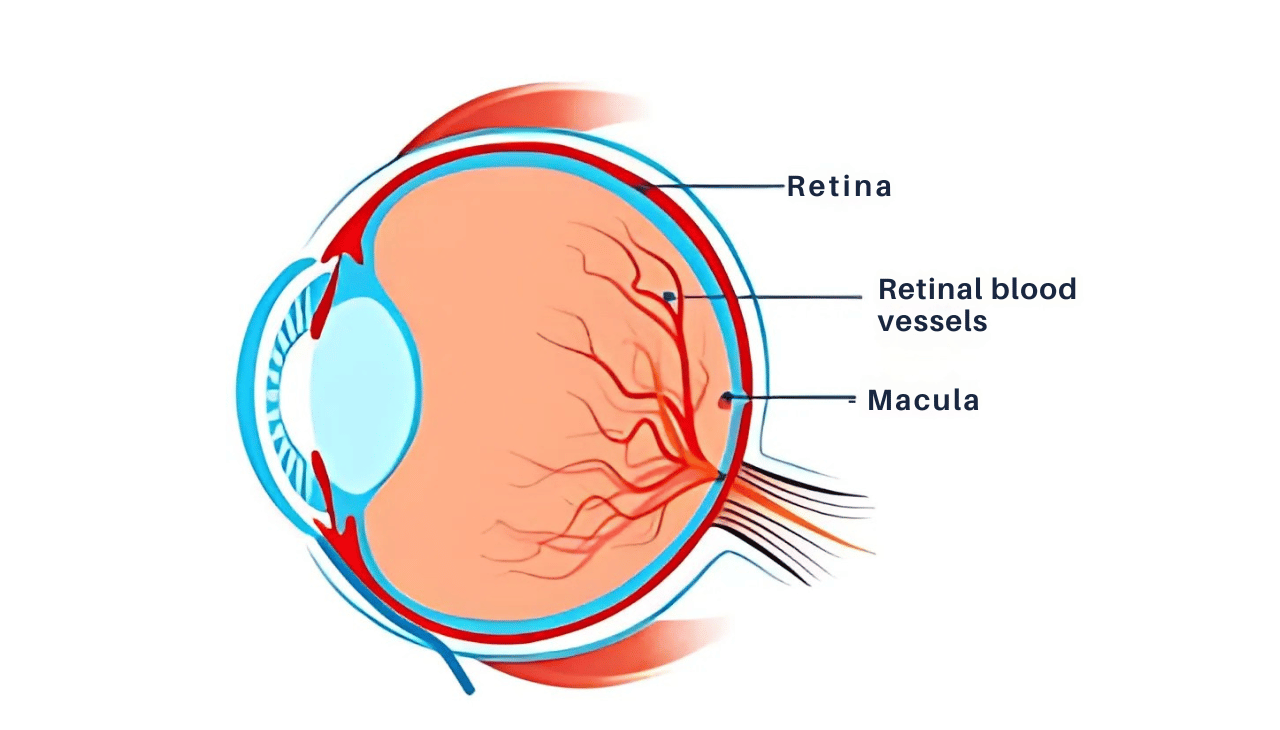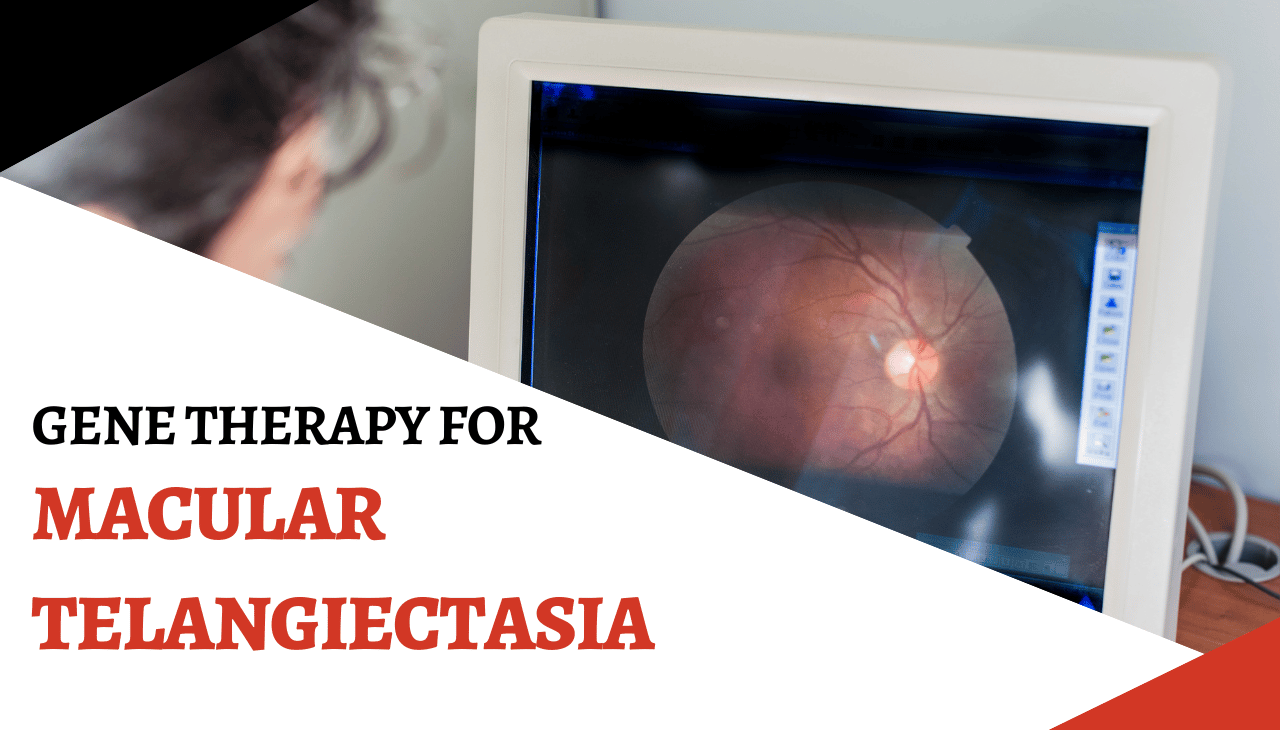Vision is one of the most precious senses, and any threat to it can be deeply unsettling. Macular Telangiectasia (MacTel) is a rare but progressive eye disease that affects the macula — the central part of the retina responsible for sharp, central vision. Until recently, treatment options were limited, primarily focusing on symptom management rather than addressing the root cause. However, with the advancement of gene therapy, a promising new chapter has begun in the fight against MacTel.
This blog explores how gene therapy is transforming care for Macular Telangiectasia, why it’s important, and what it could mean for the future of vision restoration. We’ll also dive into the symptoms, causes, and treatment outlook while introducing you to Laxmi Eye Institute’s expertise in retinal care and advanced vision treatment.
Understanding Macular Telangiectasia

Macular Telangiectasia, especially Type 2, is a bilateral eye disorder where abnormal blood vessels develop around the fovea — the part of the retina that gives us the ability to see fine details. These vessels leak, damaging the retina over time. Patients typically experience blurred or distorted central vision, difficulty reading, and reduced contrast sensitivity.
There are two types:
- Type 1: Usually affects one eye and is associated with vascular anomalies.
- Type 2 (more common): A bilateral and progressive condition that can lead to significant vision loss.
What makes MacTel particularly challenging is its slow progression and lack of symptoms in early stages, often delaying diagnosis.
The Promise of Gene Therapy in Retinal Diseases
Gene therapy works by targeting the genetic muta

tions responsible for certain diseases. In retinal conditions like MacTel, scientists can introduce a functional copy of a faulty gene into retinal cells using a harmless virus as a delivery system. This approach can help restore or preserve vision.
Recent research into the role of the serine biosynthesis pathway and mutations in the PHGDH gene in MacTel has led to potential gene therapies aiming to correct metabolic imbalances within retinal cells. Early-phase clinical trials have shown encouraging signs — patients report stabilization in their vision, and in some cases, slight improvements.
This therapy, while still under development, offers real hope. Unlike previous treatments that only managed symptoms, gene therapy may address the underlying cause — potentially slowing, halting, or even reversing the progression of MacTel.
Who Might Benefit From Gene Therapy?
Gene therapy isn’t a one-size-fits-all solution. Patients who may benefit include:
- Individuals diagnosed with early to moderate stages of Type 2 MacTel.
- Those with identified genetic markers such as mutations in PHGDH or related pathways.
- Patients who haven’t responded well to conventional treatments like anti-VEGF injections.
As with any medical advancement, eligibility will depend on a thorough diagnostic evaluation and access to clinical trials or specialized centers offering the treatment.
How Gene Therapy Works for MacTel
- Genetic Testing: Identifying the underlying mutation or biochemical abnormality.
- Vector Delivery: Using an adeno-associated virus (AAV) to carry the correct gene into retinal cells via injection.
- Cellular Integration: Once inside, the healthy gene begins producing the necessary proteins to restore normal cell function.
- Monitoring & Support: Patients are regularly monitored to assess efficacy and manage any immune responses.
It’s important to note that this isn’t an instant cure — the therapy aims to stop or slow the progression and preserve the remaining vision.
Current Challenges and the Road Ahead
While gene therapy is promising, it’s not without limitations:
- High cost and accessibility.
- Need for early diagnosis to prevent irreversible damage.
- Long-term data on safety and effectiveness is still evolving.
However, global research collaborations and trials are accelerating progress. With continued innovation, gene therapy could soon become a standard care option for MacTel and other retinal conditions.
Expert Eye Care at Laxmi Eye Institute
If you or a loved one is experiencing vision problems or has been diagnosed with Macular Telangiectasia, early consultation with a retinal specialist is critical.
Laxmi Eye Institute is one of the most trusted names in eye care in Mumbai, serving patients for over 30 years with dedication and integrity. Known for its advanced facilities and expert ophthalmologists, Laxmi Eye Institute offers comprehensive retinal diagnostics and treatment.
Our Specializations Include:
- Specs Removal / LASIK (Bladeless LASIK, ICL, Contoura Vision)
- Cataract Surgery
- Glaucoma Management
- Diabetic Eye Care
- Corneal Diseases & Eye Donation
- Retina Treatment
- Pediatric Ophthalmology
📍 Clinic Locations:
- Laxmi Eye Clinic (Dombivli)
1st Floor, SS Business Park, Gharda Circle, Dombivli East, Mumbai, Maharashtra 421201 - Laxmi Eye Clinic (Kharghar)
Office 108–110, Anant CHS, Sector 4, Kharghar, Navi Mumbai 410210 - Laxmi Eye Hospital & Institute (Panvel)
Mulla Hamid Rd, Old Panvel, Navi Mumbai 410206 - Laxmi Eye Institute (Kamothe)
Shop 26/27, Near ICICI Bank, Sector 34, Kamothe, Navi Mumbai 410209
To book an appointment, visit our website or call your nearest branch for personalized, expert care.
FAQs
Q1. What are the early signs of Macular Telangiectasia?
A1. Blurred vision, difficulty reading, distortion of straight lines, and a gray or dark spot in the central vision.
Q2. Is MacTel curable?
A2. Currently, it is not curable, but gene therapy and other treatments aim to manage or slow its progression.
Q3. How is MacTel diagnosed?
A3. Through imaging techniques like Optical Coherence Tomography (OCT), fluorescein angiography, and fundus autofluorescence.
Q4. Is gene therapy available in India?
A4. While still emerging, certain hospitals and research institutes are participating in global trials. Laxmi Eye Institute provides guidance on advanced care pathways.
Q5. Are there risks associated with gene therapy?
A5. Risks are minimal but may include inflammation or immune responses. Close monitoring by specialists is essential.
Conclusion
Gene therapy represents a bold new frontier in the treatment of Macular Telangiectasia, offering hope where few options existed before. As research advances, patients may finally have access to interventions that do more than manage — they may actually preserve and restore vision.
If you or someone you know is struggling with vision problems, don’t wait. Schedule a consultation at Laxmi Eye Institute and take the first step toward advanced, compassionate eye care.

